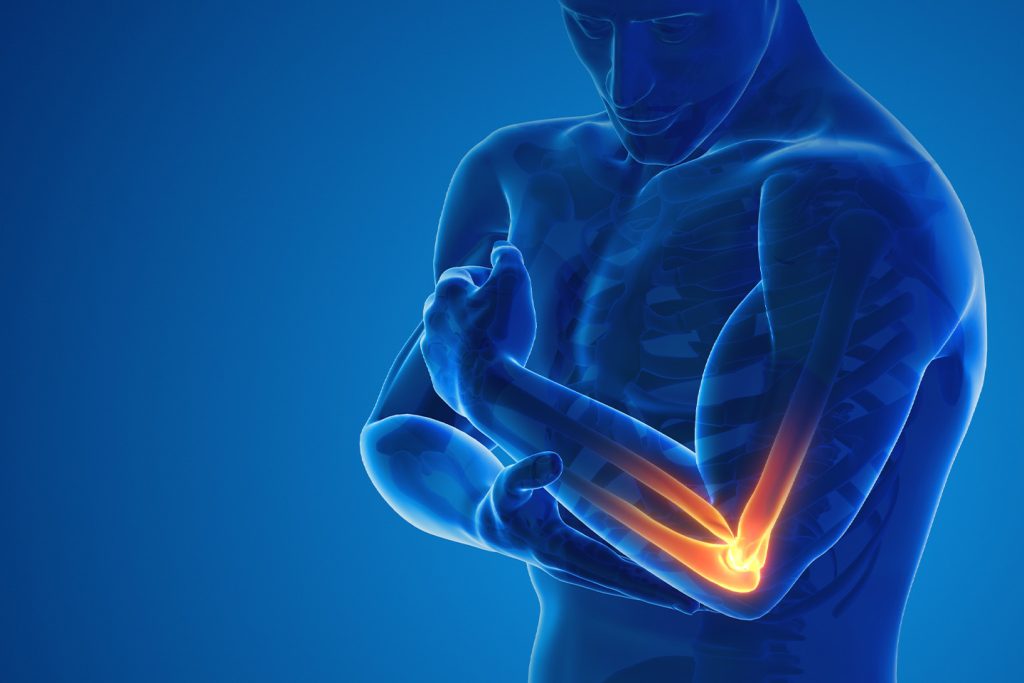Introduction
Instances of elbow fractures, though common in all ages, are typical in children. With several variants of elbow fractures and their associated risk, particularly neurovascular, prompt and effective diagnosis, evaluation, treatment, and management is crucial. Professional medical interventions in addressing the debilitating pain and trauma resulting from such fractures become necessary to prevent further damage to the bones.
This blog focuses on understanding elbow fractures, their types, and the role of orthopedic trauma implants in aiding their recovery, with the sole purpose of providing an insightful look into the topic of elbow fracture treatment and management.
Elbow Fracture and Its Types
The humerus, the radius, and the ulna form a hinge joint called an elbow. The bones, ligaments, muscles, and tendons together hold an elbow. The tip of the elbow is known as the olecranon. Injuries to elbows are common due to accidents, falls, or impact injuries. Elbow fractures could result in displaced bone fragments, causing deformity or open fractures, where the bone fragments could bulge out through the skin.
Elbow fractures are categorized as olecranon fracture (fracture of the part of the ulna that is susceptible to fracture as muscles do not cover it), radial head fracture (fracture of the top of the radius bone, below the elbow), and distal humerus fracture (fracture of the bone connecting the shoulder to the elbow).
A fractured elbow may result in dislocation that could cause visible deformity. Swelling and tenderness or numbness in the affected area, stiffness of the elbow, deformity, pain due to mobility, instability of the broken bone, or bruising are some of the symptoms of a fractured elbow. These symptoms need immediate medical intervention.
Treatment of Elbow Fracture
Once the elbow is diagnosed with a fracture through a CT scan, X-rays, MRI, or musculoskeletal ultrasounds, the healthcare provider may treat the broken bone non-surgically or surgically, depending on the severity of the fracture.
In cases of non-displaced bone fractures, pain and anti-inflammatory medications, elevation methods, physical therapy, casts, splints, or slings are recommended to reduce pain and stabilize fractured bones. A non-displaced fracture means that though the bones are broken, they are not dislocated and can be fixed through external support.
Surgical treatment becomes necessary when the fractured elbow cannot be fixed through non-surgical methods due to dislocation. This is known as open reduction, where the surgeon fixes the fracture through surgery. Elbow fracture surgery involves internal fixation of the fractured bones through physical positioning. The treatment aims to stabilize the dislocated bones and place them together with the help of trauma implants like screws, pins, wires, or plates.
Trauma Implants and Their Role in Treating Elbow Fractures
The various trauma implants that aid elbow fracture fixation and healing are –
- Screws- Screws are simple devices commonly used in internal fixation of broken bones, either alone or in combination with plates, wires or pins. These screws help hold and fix the fracture enabling stability and immobility of the fractured bones for proper healing.
- Plates- Plates act as internal splints that hold the fractured bones together. They may be left in place or removed over time. Plates are indicated for intra-articular fractures, comminuted supracondylar fractures, osteotomies, malunions, and non-unions of the distal humerus, olecranon and/or proximal ulna.
- Pins- Pins are used in supracondylar humerus bone fracture (when the humerus bone above the elbow is fractured), which is common in children when the fall is on the over-stretched arms. In cases of displacement, the fracture is pinned through close or open reduction depending on the need and condition of the fracture. The surgeon treats the fractured elbow through percutaneous pins kept below the cast but outside of the skin.
- Wires- There is an increased risk of non-union in case of lateral humeral condyle fractures and the need for extended internal fixation time. Kirschner wires are used in such fractures and are either buried or non-buried (left protruding from the skin). These wires require fewer incisions and hence have fewer chances of infection and more of faster healing.
Osteotomy, total elbow replacement, and arthrodesis, among others, are the treatment options for a fractured elbow, requiring surgery due to its severity. Screws, plates, pins, and wires play a vital role in the fixation and stabilization of fractured bones that need proper positioning and reconstruction. In the case of arthrodesis, plates and screws are used to enable the olecranon and the humerus bone to grow together, fusing as one. For total elbow replacement, once the fragmented bones are removed, the humerus and the ulna have implants attached to them, which are fixed to form a joint.
Conclusion
Trauma implants aid bone realignment and fixation, enabling stabilization and reconstruction of the fractured bones. The elbow is one of the most vulnerable body parts to be commonly hurt and fractured through accidental falls and injuries. The pain, discomfort, and trauma resulting from bone fragments are often unbearable and debilitating, disrupting day-to-day activities and everyday living. Untreated or unaddressed fractures may lead to lifetime issues of bone dislocation or deformity and associated hardships of restricted movements and dependence.
Advancement and deployment of trauma implants in orthopedic treatment aid mitigate the pain and suffering associated with fractures while restoring mobility and independence and enriching the lives of patients.
References
https://orthoinfo.aaos.org/en/diseases–conditions/elbow-olecranon-fractures/
https://www.ncbi.nlm.nih.gov/books/NBK4419
https://my.clevelandclinic.org/health/diseases/22050-elbow-fractures
https://www.massgeneral.org/orthopaedics/children/conditions-and-treatments/supracondylar-elbow-fractures-followup-care#:~:text=The%20pins%20that%20are%20holding,confirm%20healing%20of%20the%20fracture.





Comments are closed.